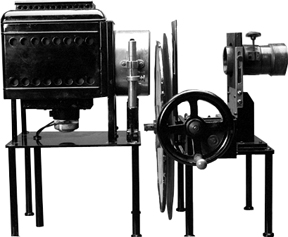
|

|
Zoopraxiscope, 1877
Eedweard Muybridge was an English photographer in the late 1800s known for pioneering the capture of an object in motion. Muybridge's project was brought to him on the terms of a bet. Muybridge’s friend, Leland Stanford, Governor of California, a racehorse owner and gambling man, placed a wager debating whether or not a horse lifted all of its feet off the ground while galloping. At this time there were no devices that could capture such rapid movement. To solve the bet Muybridge designed a device that could clearly solve the question through the means of photography. The debate was solved in 1877 when Muybidge designed the zooperaxiscopic lens. The zooperaxiscope had a shutter speed of one-thousandth of a second. Muybridge exposed the plates with the shortest time possible in order to keep them sensitive. To fully capture a galloping horse it would be necessary to have multiple exposures to examine the horse’s movements. This required a rapid sequencing of photographs. 12 cameras were fitted with electromagnetic shutters attached to strings set across the track that activated when the horse galloped across. The final images show the horse racing across the track, feet tucked under its belly, temporarily gliding through the air while galloping, solving the bet.
|

|